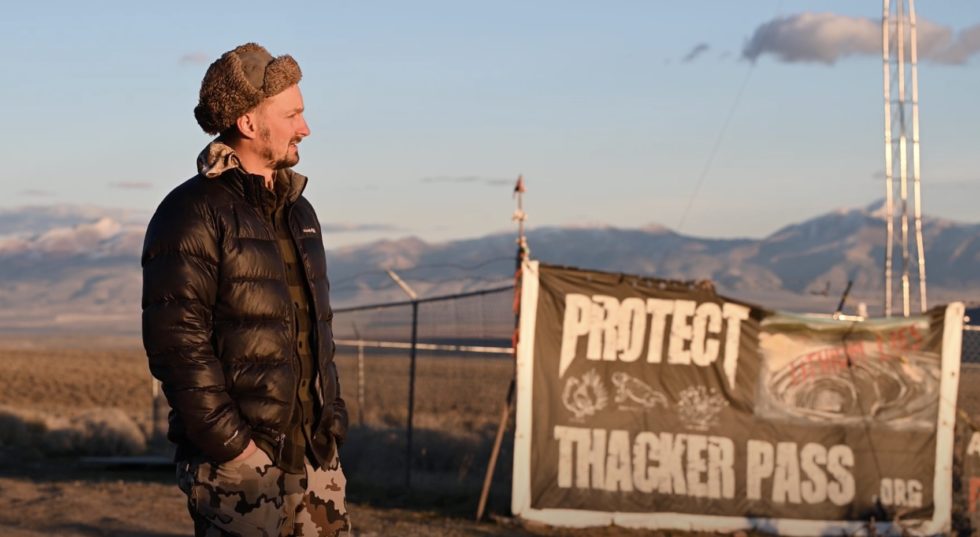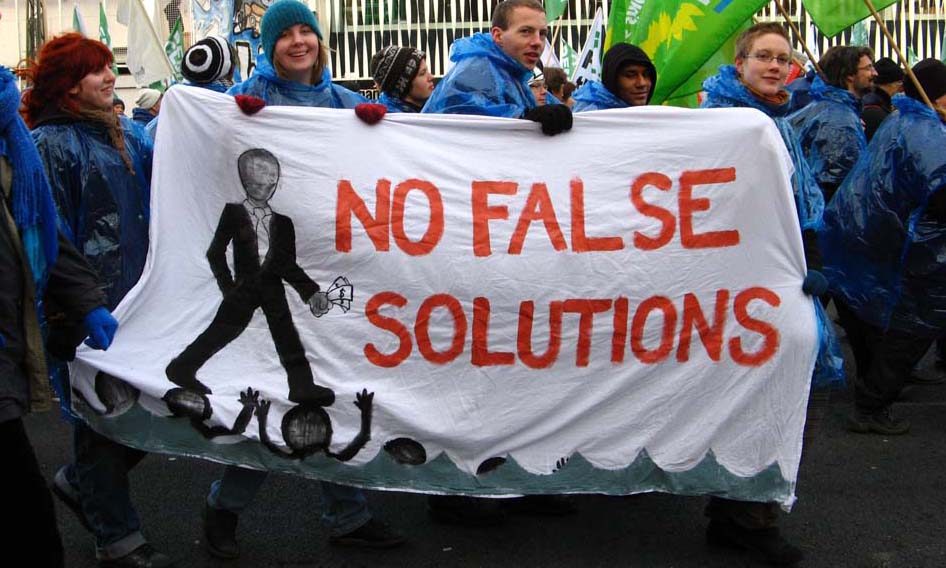
by DGR News Service | Mar 4, 2022 | ACTION, Culture of Resistance, Education, Movement Building & Support, Repression at Home, Strategy & Analysis
Editor’s note: People who confront the destruction of the planet find a legal system that prioritizes corporations and not uncommonly become the targets of police surveillance. Unless we take precautions, police surveillance tools can uncover our plans and organizational structures—and can contribute to a culture of paranoia that discourages action.
This training, from the Freedom of the Press Foundation, consists of interactive materials for learning what sort of tools law enforcement agencies use against journalists, but the material is practically applicable for organizers as well. We encourage our readers to study this material and consider appropriate countermeasures.
by Freedom of the Press Foundation
The Digital Security Training team at Freedom of the Press Foundation works with news organizations to better protect themselves, their colleagues, and sources by upgrading their security posture. In an environment where journalists are increasingly under attack, experiencing targeted hacking, harassment, and worse, we want to see systemic change in the way news organizations learn about and address their digital security concerns. While journalists come from many professional backgrounds, one place we can most reliably address this need for digital security education systemically is within journalism schools, where students are already learning many of the skills they will need in a contemporary newsroom. We know many programs feel underprepared for education of this kind, so we built this curriculum to better support J-schools’ goals for digital security education.
Below, we have created modules responsive to a variety of digital security topics. We intend for this resource to be used by journalism professors and educators looking for a starting point for digital security education. Ultimately, it’s our hope that by tinkering with these materials, you might take advantage of the parts most useful or inspiring to you, and make this curriculum your own.
Police Surveillance Tools Training
This section on surveillance tools used by law enforcement is discussion focused, and intends to get students to think critically about the relationship between surveillance, privacy, and transparency. It begins with lecture canvassing a variety of law enforcement surveillance technology, based on research from from the Electronic Frontier Foundation. Afterward, the module opens into an activity to investigate surveillance technology used in a location of their choice, followed by a discussion of their interpretation of law enforcement surveillance technologies they’ve discovered.
Prerequisites
Threat modeling
Legal requests in the U.S.
Estimated time
60-70 minutes
Objectives
- Upon successful completion of this lesson, students will be able to distinguish between technology commonly used by law enforcement to conduct surveillance in physical spaces.
- Students will be able to identify which of these tools are used in a specific physical location, based on publicly-accessible reporting tools.
Why this matters
The technical capabilities of law enforcement actors may affect journalists’ threat models when conducting work in risky situations. For example, when meeting a sensitive source their location may be tracked through a constellation of surveillance equipment, or their phone numbers and current call or text data may be scooped up when covering protests.
Homework
(Before class)
Sample slides
Credit to Dave Maass and the Electronic Frontier Foundation for these slides, with minor modifications.
Law enforcement surveillance tech (Google Slides)
Activities
Have students open up Atlas of Surveillance and report back for the group with surveillance technology used in a location where they’ve lived in the U.S. (e.g., where their hometown is; the campus).
Questions for discussion
- In terms of their ability to compromise journalistic work, which one of these technical law enforcement capabilities is most concerning to you? What makes it concerning?
- If that’s not especially concerning, why is that?
- Out of respect for peoples’ privacy, are there any issues you think should be “off the table” for journalistic coverage? If so, what are those issues, and why do you think they should be off the table?
- We often talk about privacy for people, but transparency for institutions. Why the distinction? Are there times when individual actions demand transparency, and when institutions have a meaningful claim to privacy?
This article was first published by the Freedom of the Press Foundation. It is republished under the CC-BY-NC 2.0 license. Banner image: Police training using bodycams via flickr (CC BY-SA 2.0).

by DGR News Service | Dec 19, 2021 | Education, Human Supremacy, Strategy & Analysis, The Problem: Civilization
Non-neutrality of technology & limits to conspiracy theory
By Nicolas Casaux
“For, prior to all such, we have the things themselves for our masters. Now they are many; and it is through these that the men who control the things inevitably become our masters too.”
Epictetus, Discourses, Book IV, Thomas Wentworth Higginson, Ed.
In an essay published in the fall of 1872, entitled “On Authority,” Friedrich Engels, Marx’s alter ego, railed against the “anti-authoritarians” (the anarchists) who imagined they could organize the production of “modern industry” without recourse to any authority:
“Let us take by way of example a cotton spinning mill. The cotton must pass through at least six successive operations before it is reduced to the state of thread, and these operations take place for the most part in different rooms. Furthermore, keeping the machines going requires an engineer to look after the steam engine, mechanics to make the current repairs, and many other labourers whose business it is to transfer the products from one room to another, and so forth. All these workers, men, women and children, are obliged to begin and finish their work at the hours fixed by the authority of the steam, which cares nothing for individual autonomy. The workers must, therefore, first come to an understanding on the hours of work; and these hours, once they are fixed, must be observed by all, without any exception. Thereafter particular questions arise in each room and at every moment concerning the mode of production, distribution of material, etc., which must be settled by decision of a delegate placed at the head of each branch of labour or, if possible, by a majority vote, the will of the single individual will always have to subordinate itself, which means that questions are settled in an authoritarian way.”
He mentioned another example,
“the railway. Here too the co-operation of an infinite number of individuals is absolutely necessary, and this co-operation must be practised during precisely fixed hours so that no accidents may happen. Here, too, the first condition of the job is a dominant will that settles all subordinate questions, whether this will is represented by a single delegate or a committee charged with the execution of the resolutions of the majority of persona interested. In either case there is a very pronounced authority. Moreover, what would happen to the first train dispatched if the authority of the railway employees over the Hon. passengers were abolished?”
What needs to be understood is that:
“The automatic machinery of the big factory is much more despotic than the small capitalists who employ workers ever have been. At least with regard to the hours of work one may write upon the portals of these factories: Lasciate ogni autonomia, voi che entrate! [Leave, ye that enter in, all autonomy behind!]
If man, by dint of his knowledge and inventive genius, has subdued the forces of nature, the latter avenge themselves upon him by subjecting him, in so far as he employs them, to a veritable despotism independent of all social organization. Wanting to abolish authority in large-scale industry is tantamount to wanting to abolish industry itself, to destroy the power loom in order to return to the spinning wheel.”
To put it another way, Engels points out that technical complexity is tied to organizational imperatives. Separate to any individual’s intention, each technology, each technical device, has its own ecological and social implications.
In a similar vein to Engels, George Orwell noted that:
“…one is driven to the conclusion that Anarchism implies a low standard of living. It need not imply a hungry or uncomfortable world, but it rules out the kind of air-conditioned, chromium-plated, gadget-ridden existence which is now considered desirable and enlightened. The processes involved in making, say, an aeroplane are so complex as to be only possible in a planned, centralized society, with all the repressive apparatus that that implies. Unless there is some unpredictable change in human nature, liberty and efficiency must pull in opposite directionsi.”
Consider another example. The fabrication of a wicker basket, like that of a nuclear power plant (or a solar photovoltaic power plant, or a smartphone, or a television set), has material (and therefore ecological) as well as social implications. In case of the former, these material implications are related to the collection of wicker. While in case of the second, they relate, among other things, to the procuring (mining, etc.) of the innumerable raw materials needed to build a nuclear power plant, and before that, to the construction of the tools needed to extract those raw materials, and so on – modern technologies are always embedded in a gigantic technological system made up of many different technologies with immense social and material implications.
In his essay entitled “The Archaeology of the Development Idea,” Wolfgang Sachs takes the example of:
“an electric mixer. Whirring and slightly vibrating, it mixes ingredients in next to no time. A wonderful tool! So it seems. But a quick look at cord and wall-socket reveals that what we have before us is rather the domestic terminal of a national, indeed worldwide, system: the electricity arrives via a network of cables and overhead utility lines fed by power stations that depend on water pressures, pipelines or tanker consignments, which in turn require dams, offshore platforms or derricks in distant deserts. The whole chain guarantees an adequate and prompt delivery only if every one of its parts is overseen by armies of engineers, planners and financial experts, who themselves can fall back on administrations, universities, indeed entire industries (and sometimes even the military).”
Back to the wicker basket and the nuclear power plant. The social implications of the wicker basket are minimal. It relies on the transmission of a very simple skill that can be understood and applied by any person. The social implications of the nuclear power plant are immeasurable and far reaching. The construction of a nuclear power plant is based on a social organization capable of generating a massive division and specialization of work, highly qualified engineers, workers, managers of all kinds (i.e. on an organization with a system of schooling, a way of producing an obedient workforce, scientific elites, etc.), of transporting materials between distant points of the globe, etc. (and this was the case in the USSR as well as it is in the USA today).
Therefore, those who claim — often without having seriously thought about the matter — that technologies are “neutral” because one can use a knife to cut butter or slit one’s neighbor’s throat are seriously mistaken. Yes, you can use a knife to cut butter or slit your neighbor’s throat. But no, this certainly does not mean that this technology is “neutral”, it only testifies the existence of a certain versatility in the use of technological tools. They are seriously mistaken because they ignore the conditions under which the knife is obtained, made and produced. They overlook or ignore the way in which the technology they take as an example is manufactured. They assume that the technology already exists — as if technologies fell from the sky or grew naturally in trees, or as if they were simply tools floating in space-time, implying nothing, coming from nothing, just waiting to be used well or badly.
This is, obviously, not the case. No technology is “neutral”. Every technology has social and material requirements. The case of objects like the knife is special in that there exists very simple versions of them, corresponding to low technologies, soft technologies, whose social and material implications are minimal, as well as complex versions of them, which belong to the high-tech realm, whose social and material implications are innumerable. A knife does not have the same social and material implications depending on whether it is a (prehistoric) knife made of flint or obsidian or a knife bought at Ikea made of stainless steel (including chromium, molybdenum and vanadium) with a handle made of polypropylene. The manufacturing processes, the materials needed, the specialized knowledge involved are completely different.
In an essay called “Authoritarian and Democratic Technics”, dated 1964, American sociologist Lewis Mumford distinguished two main categories of technologies (techniques, in his vocabulary). Democratic technologies and authoritarian technologies. Democratic technologies are those that rely on a “small-scale method of production”, that promote “communal self-government, free communication as between equals, unimpeded access to the common store of knowledge, protection against arbitrary external controls, and a sense of individual moral responsibility for behavior that affects the whole community”. They favor “personal autonomy” and give “authority to the whole rather than the part”. Democratic technology has “modest demands” and “great powers of adaptation and recuperation”.
Authoritarian technologies, on the other hand, confer “authority only to those at the apex of the social hierarchy,” rely on the “new configuration of technical invention, scientific observation, and centralized political control that gave rise to the peculiar mode of life we may now identify, without eulogy, as civilization”, on “ruthless physical coercion, forced labor and slavery”, on “complex human machines composed of specialized, standardized, replaceable and interdependent parts — the work army, the military army, the bureaucracy”.
What does this have to do with conspiracy theory? One of the characteristics of a conspiracy theory is the blaming of nefarious individuals for most of the ills that plague the human condition in contemporary industrial civilization. As if all our problems were the result of malevolent intentions of wicked people. Most conspiracists — and this trait is not exclusive to them, it also characterizes most people on the left — imagine that without these bad people and their bad intentions, we could live in a just and good, egalitarian and sustainable technological civilization. It would simply be a matter of electing good rulers or reforming society in multifarious ways (as if systems and objects of themselves had no requirements, no implications).
However, as we have made clear, we should recognize that all things — including technologies — have requirements and implications independent of the will of any specific human being.
As Langdon Winner noticed in his book The Whale and The Reactor, each and every technology requires its environment
“to be structured in a particular way in much the same sense that an automobile requires wheels in order to move. The thing could not exist as an effective operating entity unless certain social as well as material conditions were met.”
This is why some technologies (certain types of technologies) are, by necessity, linked to authoritarianism. This is most notably the case, to state the obvious, of all “high technologies”, of all modern technologies in general. We should note that, historically, the more civilization became global (the more the economic system became global), the more powerful its technologies became, the more rigid and authoritarian. This process is still ongoing. And the more powerful and dangerous technologies become, like nuclear power or artificial intelligence, the more authoritarianism — a thorough control of people and processes and everyday life — becomes necessary in order to prevent any catastrophe, in other words, the more technocratic society becomes.
Let us take another thing as an example: the size of human societies. In his “Project of Constitution for Corsica”, written in 1765, Jean-Jacques Rousseau noted:
“A purely democratic government is more suitable for a small town than for a nation. One cannot assemble the whole people of a country like that of a city, and when the supreme authority is entrusted to deputies the government changes and becomes aristocratic.”
In his book The Myth of The Machine (1967), Lewis Mumford similarly noted:
“Democracy, in the sense I here use the term, is necessarily most active in small communities and groups, whose members meet face to face, interact freely as equals, and are known to each other as persons: it is in every respect the precise opposite of the anonymous, de-personalized, mainly invisible forms of mass association, mass communication, mass organization. But as soon as large numbers are involved, democracy must either succumb to external control and centralized direction, or embark on the difficult task of delegating authority to a cooperative organization.”
The size of a human society has, quite logically, implications, meaning that it determines — at least in part — how its members are able to organize themselves politically, independent of human preferences. One can wish with all one’s heart to establish a real democracy (i.e. a direct democracy) with 300 million people, but in practice it is (very) complicated.
All things have their requirements.
We could take another example, related to the previous one: Human density. Since its advent, civilization has been synonymous with the emergence of infectious diseases, epidemics and pandemics (the Athens plague, the Antonine plague, etc.), because one of its intrinsic characteristics is a high concentration of domesticated animals, where pathogens can mutate and reproduce, near a high concentration of — also domesticated — human beings (assembled in cities), who can thus be contaminated by the pathogens of their domesticated animals, and then infect each other all the more quickly and extensively as the available means of transportation are rapid and global. In addition to all this, because of its needs, every civilization has a systemic imperative to degrade existing ecosystems, to disturb nature’s dynamic equilibriums, which increases the risk of new epidemics or pandemics.
In order to alleviate these problems, industrial civilization has developed various remedies, including vaccination.
Just as industrially raised pigs would probably not survive in their environment without medication (antibiotics and others), urban existence and civilized life (the life of industrially raised human beings) would be difficult without vaccines [or some other form of palliative], with even more numerous and devastating epidemics and pandemics.
Here we see again that things have their requirements. The list of possible examples goes on and on. This means, among other things, that life in cities, with running water, electricity and high technology in general has many social and material implications, among which, in all probability, a hierarchical, authoritarian and unequal social system. (It is certainly the case that the requirements of things are not always extremely precise, offering relative latitude: the sanitary pass in France was probably not an absolute necessity, since many countries didn’t implement it, at least not yet; on the other hand, all of the nation-states worldwide are constituted in a similar way since one finds police forces, a president etc. everywhere).
Yes, some individuals already own and seek to monopolize more and more power and wealth. But if we live in authoritarian societies today, it is certainly not — not onlyii — because of greedy individuals, lusting for control, power and wealth. The authoritarian and unequal character of industrial civilization is not — not only — the result of the intentions and deeds of a few ultra-rich people like Klaus Schwab or Bill Gates. It is, in great part, the result of the requirements of the things that constitute it — technical systems, specific technologies, economic systems, etc.
If we want to get rid of authoritarianism, inequality, and found true democracies, we have to give up all those things whose requirements prevent us from doing so — in particular, we have to give up modern technologies.
ii� This is in its review of A Coat of Many Colours: Occasional Essays by Herbert Read, in the Collected essays, journalism and letters of George Orwell, Volume IV, In Front of Your Nose, 1945-1950.
ii� “Not only” because initially, if we came to live in authoritarian societies, in industrial civilization, it is largely because of the intentions of a few groups of individuals, who gradually (and by means of force, violence) imposed this new socio-technical organization on the populations. And because the rich and powerful, the elite, sometimes conspire (history is full of examples of conspiracies that are now officially acknowledged) to make people accept new technical systems, which come with certain requirements. Once these systems have been accepted and adopted by people, they have no other choice, if they wish to keep them, than to comply with their requirements.

by DGR News Service | Nov 15, 2021 | Education, Lobbying, Strategy & Analysis
By Max Wilbert
– Section 11318: Exempts oil and gas pipelines on most federal lands from environmental analysis.
– Sections 40301-40333 (“Fuels and Technology Infrastructure Investments”): These sections propose nearly $15 billion in taxpayer subsidies for dirty energy, including oil, coal, gas, and woody biomass via investments in largely theoretical and unproven carbon capture and storage technologies, including an additional $3 billion to begin construction of a massive network of new CO2 pipelines (Sec. 41004), while also dishonestly defining “clean hydrogen” to include hydrogen derived from climate-polluting carbon-fuel sources such as biomass and fossil fuels (Sec. 40311). The approach outlined here is riddled with uncertainty and harmful impacts while perpetuating our reliance on fossil fuels, which is why it has been denounced as a false climate solution by the scientific community. An additional $6 billion in subsidies is proposed for nuclear energy ( Sec. 41002).
– Section 40801: Authorizes USFS to upgrade and “store” National Forest System roads for future commercial timber production, rather than decommission them.
– Section 40803 (“Wildfire Risk Reduction”): Mandates the logging of 10 million acres of federal forestlands over the next 6 years, and an additional 20 million acres of federal forestlands following the initial 10 million acres of logging. The way these provisions are worded could and likely would be interpreted by courts as intending a complete elimination of all federal environmental laws (including NEPA, ESA, NFMA, and others) to facilitate this logging mandate. Section 40803 also dedicates over $1.6 billion in new taxpayer subsidies for logging, including post-fire clearcutting, on federal lands.
– Section 40804 (“Ecosystem Restoration”) : Authorizes $400 million in subsidies for wood processing facilities, such as sawmills, biomass power plants and wood pellet manufacturing; $400 million for increased logging on public and private forests; $50 million for a program to rent equipment to the timber industry to allow them to log otherwise inaccessible areas, and grants to build sawmill infrastructure and other wood-processing facilities.
– Section 40806: Eliminates environmental analysis under NEPA for an unlimited number of logging projects on federal lands, up to 1,000 feet wide and 3,000 acres in size each, under the guise of “fuelbreaks”.
– Section 40807: Weakens current environmental laws to create a broad exemption which eliminates the public’s right to file administrative objections against planned logging projects on federal lands.
– Sections 70301-70303: Promotes post-fire clearcutting and carbon removal, under the scientifically discredited notion that forests do not regenerate after fires, and promotes conversion of native forests to industrial tree plantations.
– Section 80402: Proposes a system of sweeping tax credits (financial implications unspecified, but potentially in the billions of dollars) for dirty energy, including coal, oil, gas, garbage incineration, and woody biomass under the false-solution catch-all of carbon capture and storage.
https://www.congress.gov/bill/117th-congress/house-bill/3684?r=3&s=1

by DGR News Service | Nov 2, 2021 | Climate Change, Education, Human Supremacy, Indirect Action, The Problem: Civilization, The Solution: Resistance
This is an excerpt from the book Bright Green Lies, P. 20 ff
By Derrick Jensen, Lierre Keith and Max Wilbert
What this adds up to should be clear enough, yet many people who should know better choose not to see it. This is business-as- usual: the expansive, colonizing, progressive human narrative, shorn only of the carbon. It is the latest phase of our careless, self-absorbed, ambition-addled destruction of the wild, the unpolluted, and the nonhuman. It is the mass destruction of the world’s remaining wild places in order to feed the human economy. And without any sense of irony, people are calling this “environmentalism.”1 —PAUL KINGSNORTH
Once upon a time, environmentalism was about saving wild beings and wild places from destruction. “The beauty of the living world I was trying to save has always been uppermost in my mind,” Rachel Carson wrote to a friend as she finished the manuscript that would become Silent Spring. “That, and anger at the senseless, brutish things that were being done.”2 She wrote with unapologetic reverence of “the oak and maple and birch” in autumn, the foxes in the morning mist, the cool streams and the shady ponds, and, of course, the birds: “In the mornings, which had once throbbed with the dawn chorus of robins, catbirds, doves, jays, and wrens, and scores of other bird voices, there was now no sound; only silence lay over the fields and woods and marshes.”3 Her editor noted that Silent Spring required a “sense of almost religious dedication” as well as “extraordinary courage.”4 Carson knew the chemical industry would come after her, and come it did, in attacks as “bitter and unscrupulous as anything of the sort since the publication of Charles Darwin’s Origin of Species a century before.”5 Seriously ill with the cancer that would kill her, Carson fought back in defense of the living world, testifying with calm fortitude before President John F. Kennedy’s Science Advisory Committee and the U.S. Senate. She did these things because she had to. “There would be no peace for me,” she wrote to a friend, “if I kept silent.”6
Carson’s work inspired the grassroots environmental movement; the creation of the Environmental Protection Agency (EPA); and the passage of the Clean Air Act, the Clean Water Act, and the Endangered Species Act. Silent Spring was more than a critique of pesticides—it was a clarion call against “the basic irresponsibility of an industrialized, technological society toward the natural world.”7 Today’s environmental movement stands upon the shoulders of giants, but something has gone terribly wrong with it. Carson didn’t save the birds from DDT so that her legatees could blithely offer them up to wind turbines. We are writing this book because we want our environmental movement back.
Mainstream environmentalists now overwhelmingly prioritize saving industrial civilization over saving life on the planet. The how and the why of this institutional capture is the subject for another book, but the capture is near total. For example, Lester Brown, founder of the Worldwatch Institute and Earth Policy Institute—someone who has been labeled as “one of the world’s most influential thinkers” and “the guru of the environmental movement”8—routinely makes comments like, “We talk about saving the planet.… But the planet’s going to be around for a while. The question is, can we save civilization? That’s what’s at stake now, and I don’t think we’ve yet realized it.” Brown wrote this in an article entitled “The Race to Save Civilization.”9
The world is being killed because of civilization, yet what Brown says is at stake, and what he’s racing to save, is precisely the social structure causing the harm: civilization. Not saving salmon. Not monarch butterflies. Not oceans. Not the planet. Saving civilization. Brown is not alone. Peter Kareiva, chief scientist for The Nature Conservancy, more or less constantly pushes the line that “Instead of pursuing the protection of biodiversity for biodiversity’s sake, a new conservation should seek to enhance those natural systems that benefit the widest number of [human] people…. Conservation will measure its achievement in large part by its relevance to [human] people.”10 Bill McKibben, who works tirelessly and selflessly to raise awareness about global warming, and who has been called “probably America’s most important environmentalist,” constantly stresses his work is about saving civilization, with articles like “Civilization’s Last Chance,”11 or with quotes like, “We’re losing the fight, badly and quickly—losing it because, most of all, we remain in denial about the peril that human civilization is in.”12
We’ll bet you that polar bears, walruses, and glaciers would have preferred that sentence ended a different way.
In 2014 the Environmental Laureates’ Declaration on Climate Change was signed by “160 leading environmentalists from 44 countries” who were “calling on the world’s foundations and philanthropies to take a stand against global warming.” Why did they take this stand? Because global warming “threatens to cause the very fabric of civilization to crash.” The declaration con- cludes: “We, 160 winners of the world’s environmental prizes, call on foundations and philanthropists everywhere to deploy their endowments urgently in the effort to save civilization.”13
Coral reefs, emperor penguins, and Joshua trees probably wish that sentence would have ended differently. The entire declaration, signed by “160 winners of the world’s environmental prizes,” never once mentions harm to the natural world. In fact, it never mentions the natural world at all.
Are leatherback turtles, American pikas, and flying foxes “abstract ecological issues,” or are they our kin, each imbued with their own “wild and precious life”?14 Wes Stephenson, yet another climate activist, has this to say: “I’m not an environmentalist. Most of the people in the climate movement that I know are not environmentalists. They are young people who didn’t necessarily come up through the environmental movement, so they don’t think of themselves as environmentalists. They think of themselves as climate activists and as human rights activists. The terms ‘environment’ and ‘environmentalism’ carry baggage historically and culturally. It has been more about protecting the natural world, protecting other species, and conservation of wild places than it has been about the welfare of human beings. I come at from the opposite direction. It’s first and foremost about human beings.”15
Note that Stephenson calls “protecting the natural world, protecting other species, and conservation of wild places” baggage. Naomi Klein states explicitly in the film This Changes Everything: “I’ve been to more climate rallies than I can count, but the polar bears? They still don’t do it for me. I wish them well, but if there’s one thing I’ve learned, it’s that stopping climate change isn’t really about them, it’s about us.”
And finally, Kumi Naidoo, former head of Greenpeace International, says: “The struggle has never been about saving the planet. The planet does not need saving.”16 When Naidoo said that, in December 2015, it was 50 degrees Fahrenheit at the North Pole, much warmer than normal, far above freezing in the middle of winter.
1 Paul Kingsnorth, “Confessions of a recovering environmentalist,” Orion Magazine, December 23, 2011.
2 Rachel Carson, Silent Spring (Greenwich, CT: Fawcett Publishing, 1962), 9.
3 Ibid, 10.
4 Ibid, 8.
5 Ibid, 8.
6 Ibid, 8.
7 Ibid, 8.
8 “Biography of Lester Brown,” Earth Policy Institute.
9 Lester Brown, “The Race to Save Civilization,” Tikkun, September/October 2010, 25(5): 58.
10 Peter Kareiva, Michelle Marvier, and Robert Lalasz, “Conservation in the Anthropocene: Beyond Solitude and Fragility,” Breakthrough Journal, Winter 2012.
11 Bill McKibben, “Civilization’s Last Chance,” Los Angeles Times, May 11, 2008.
12 Bill McKibben, “Global Warming’s Terrifying New Math,” Rolling Stone, August 2, 2012.
13 “Environmental Laureates’ Declaration on Climate Change,” European Environment Foundation, September 15, 2014. It shouldn’t surprise us that the person behind this declaration is a solar energy entrepreneur. It probably also shouldn’t surprise us that he’s begging for money.
14 “Wild and precious life” is from Mary Oliver’s poem “The Summer Day.” House of Light (Boston, MA: Beacon Press, 1992).
15 Gabrielle Gurley, “From journalist to climate crusader: Wen Stephenson moves to the front lines of climate movement,” Commonwealth: Politics, Ideas & Civic Life in Massachusetts, November 10, 2015.
16 Emma Howard and John Vidal, “Kumi Naidoo: The Struggle Has Never Been About Saving the Planet,” The Guardian, December 30, 2015.






